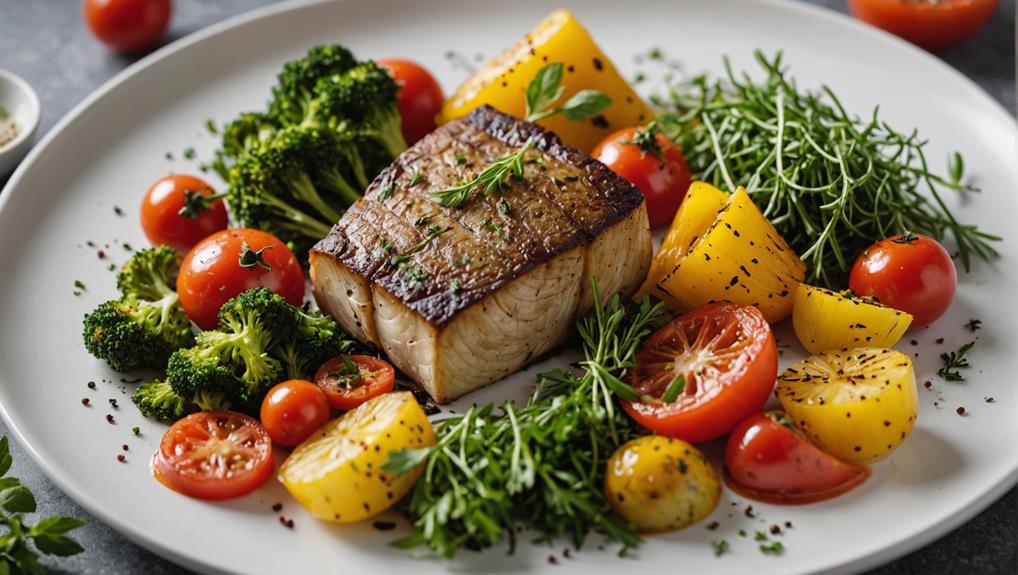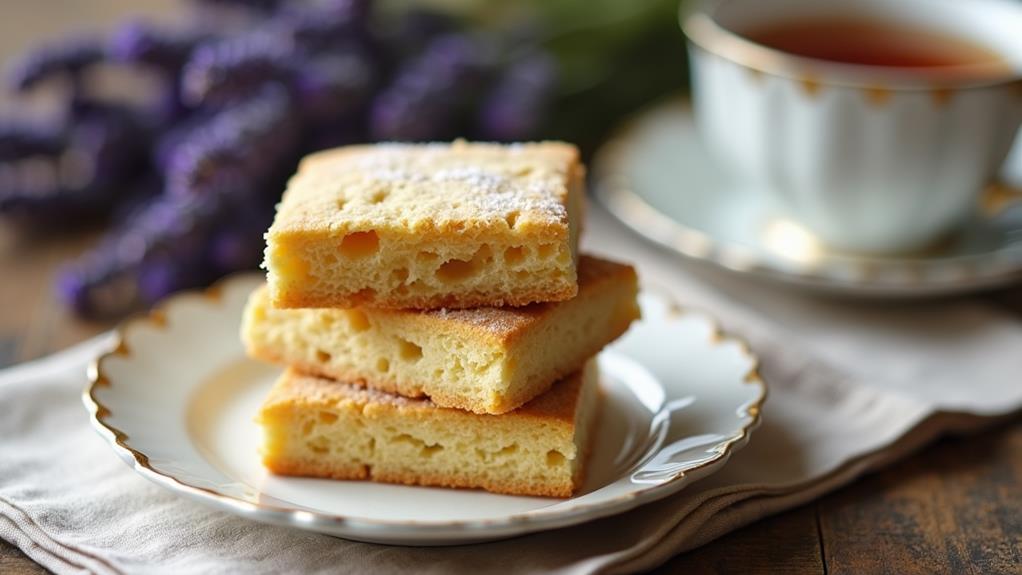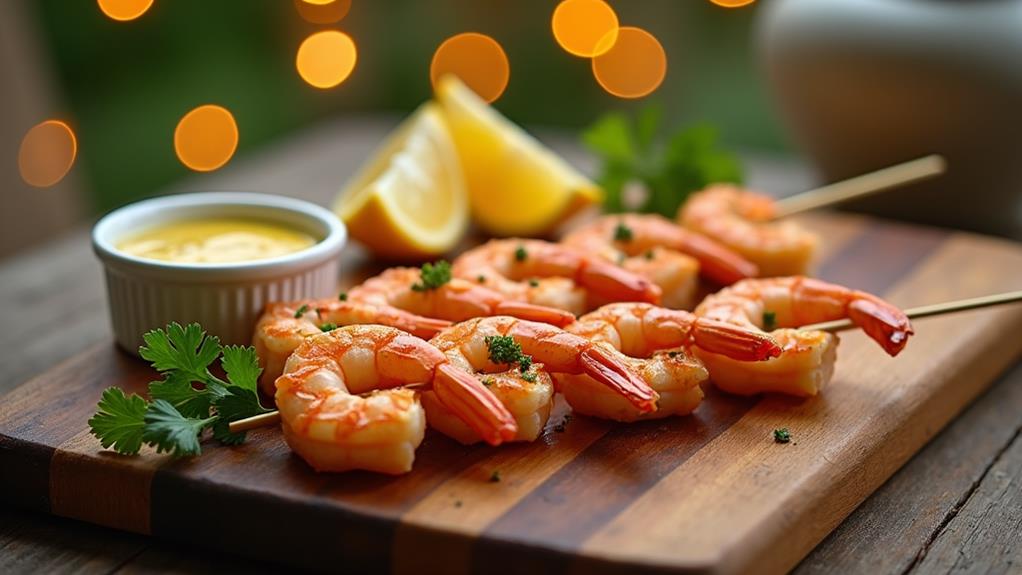Sous vide cooking transforms vegetables into mouthwatering dishes by preserving nutrients and enhancing flavors. You'll need to select fresh, high-quality veggies and vacuum-seal them with seasonings before immersing in a 185°F water bath. Cooking times vary: potatoes take an hour, squash 30 minutes, and asparagus 15 minutes. After cooking, finish your veggies with a quick sear or complementary sauce for added texture and taste. Plating is crucial; arrange your creations with vibrant colors and contrasting textures for visual appeal. This method not only produces restaurant-quality results but also offers superior health benefits by retaining more vitamins and minerals. Mastering sous vide techniques will elevate your vegetable dishes to new heights of culinary excellence.
Understanding Sous Vide Vegetable Magic
Unlocking the magic of sous vide cooking for vegetables opens up a world of culinary possibilities. This innovative technique involves vacuum-sealing your veggies and cooking them in a precisely controlled water bath, typically around 185°F. You'll be amazed at how this method preserves nutrients far better than traditional boiling, ensuring your dishes are both delicious and nutritious.
To master sous vide vegetable preparation, you'll need to tailor your approach to each type. Trim asparagus spears, cut potatoes into uniform one-inch pieces, and slice squash with care. These steps are crucial for even cooking and optimal flavor infusion.
As you experiment, you'll discover the perfect cooking times for each vegetable: potatoes require about an hour, squash needs 30 minutes less, and asparagus cooks in just 15 minutes.
Temperature control is key to sous vide success. Maintain a steady 185°F throughout the cooking process to achieve ideal textures without overcooking. Keep the lid on your container to prevent evaporation and ensure consistent results.
With these techniques, you'll create vegetable dishes that showcase natural flavors and retain maximum nutritional value.
Prepping Veggies for Sous Vide
To create mouthwatering sous vide vegetable dishes, you'll need to start with proper vegetable selection and preparation. Choose fresh, high-quality vegetables and trim them according to their specific requirements, such as peeling asparagus or cutting potatoes into uniform pieces.
When it comes to vacuum sealing, ensure you flatten the vegetables in the bags to prevent floating and promote even cooking. However, remember not to add salt to certain vegetables like asparagus, as it can affect their color and texture.
Proper Vegetable Selection
When selecting vegetables for sous vide cooking, it's crucial to choose fresh, high-quality produce that's in season. You'll want to prioritize vegetables that are firm, vibrant in color, and free from blemishes or soft spots.
For asparagus, look for straight, bright green spears with tightly closed tips. When choosing potatoes, opt for ones that are uniform in size to ensure even cooking. Squash should feel heavy for its size and have a hard, intact rind. Additionally, consider incorporating roasted root vegetables for a delicious flavor profile that pairs well with sous vide techniques.
Planning ahead of time is key to successful sous vide vegetable preparation. Consider the cooking times for different vegetables and select those that can be cooked together or easily staggered.
For example, potatoes require a longer cooking time than asparagus, so you'll need to plan accordingly. Remember that proper selection impacts the final texture and flavor of your dishes. Choose vegetables that complement each other and the main protein in your meal.
Vacuum Sealing Techniques
After selecting your vegetables, it's time to prepare them for sous vide cooking. Start by trimming and cutting your veggies into uniform sizes, ensuring even cooking throughout. For potatoes, aim for one-inch pieces, while tougher vegetables like squash require careful cutting to maintain consistency.
Butternut squash, notably, is a wonderful choice for sous vide due to its creamy texture and naturally sweet flavor, making it an ideal addition to your vegetable dishes for the autumn seasonal soups.
When vacuum sealing, remember to flatten the vegetables in the bags to prevent floating during the cooking process. This step is crucial for even cooking and optimal flavor infusion.
Season each vegetable type appropriately before sealing, using specific amounts of butter or oil to enhance flavor without compromising texture. However, be cautious with salt, especially for delicate vegetables like asparagus, as it can cause discoloration.
To achieve the best results, ensure your vacuum seal is tight and secure, eliminating any air pockets that could affect the cooking process. A proper seal is essential for maintaining the quality of your sous vide dish.
Seasoning Secrets for Flavor Infusion
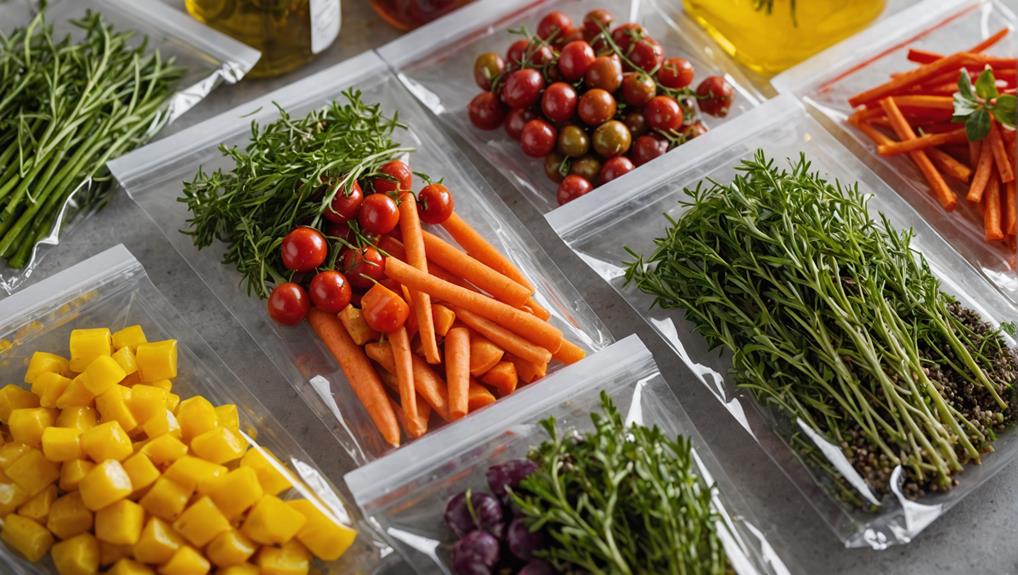
For sous vide vegetable dishes, seasoning is the key to unlocking incredible flavors. When you're preparing your veggies for the vacuum sealer, it's crucial to consider the unique requirements of each type.
For instance, you'll want to avoid salt when seasoning asparagus to prevent discoloration, ensuring your dish retains its vibrant appeal. However, don't shy away from other aromatics; two cloves of garlic can work wonders in enhancing the flavor profile of both asparagus and squash. Incorporating nutrient-rich options like lentils can elevate your dishes significantly, providing a base that complements well with various seasonings and greens, reminiscent of the nutritious benefits of lentils.
As you experiment with seasoning, remember that herbs and aromatics like thyme and rosemary can elevate your sous vide vegetables to new heights. These natural flavor enhancers create complex, enjoyable dishes without relying on excessive fats or salts.
When it comes to potatoes, you'll want to hold off on the salt and pepper until after cooking. Instead, finish them with a mix of butter, salt, and pepper to bring out their natural flavors.
Temperature Precision and Timing Mastery
Mastering the art of sous vide vegetable cooking hinges on precise temperature control and impeccable timing. To achieve temperature precision, set your sous vide machine to 185°F, the optimal temperature for retaining nutrients and enhancing flavors in vegetables. This consistent heat ensures your veggies cook evenly, transforming them into tender, flavorful delights.
Timing mastery is equally crucial. You'll need to stagger the addition of different vegetables based on their cooking times. Start with potatoes, which require a full hour. After 30 minutes, add squash to the mix. Finally, introduce asparagus just 15 minutes before completion. By using a timer for each vegetable type, you'll guarantee perfect texture and taste without overcooking.
To elevate your sous vide game, consider investing in a Wi-Fi-enabled machine. This innovation allows you to monitor and control the cooking process remotely, ensuring unparalleled precision.
Don't forget to keep the lid on your sous vide container throughout cooking. This simple step manages evaporation and maintains consistent water temperature, both essential for achieving those mouthwatering results you're after.
Perfecting the Sous Vide Finish

While sous vide cooking ensures perfectly cooked vegetables, the finishing touches can elevate your dish from good to exceptional.
Once your vegetables are ready to go, it's time to perfect that sous vide finish. Start by carefully removing them from their vacuum-sealed bags, ensuring you don't lose any of those precious juices. For vegetables like squash and asparagus, consider a quick sear in a hot pan to add texture and enhance flavor. This brief exposure to high heat can create a delightful contrast to the tender interior achieved through sous vide cooking.
Don't overlook the importance of complementary sauces and seasonings. A simple butter sauce can work wonders for asparagus, while potatoes benefit from a mix of butter, salt, and pepper.
These additions can elevate the natural flavors of your vegetables, creating a more complex and satisfying dish. Remember, the key to a perfect sous vide finish lies in the balance between the precise cooking method and these final touches.
Plating Your Sous Vide Creations
Elevate your sous vide vegetable dishes by mastering the art of plating, which combines thoughtful arrangement with strategic use of sauces and garnishes.
You'll want to create an eye-catching display by layering your vegetables and incorporating height, while also considering color contrast to highlight the vibrancy of each component.
To add the finishing touches, drizzle flavorful sauces or oils over your creation and garnish with fresh herbs or microgreens, enhancing both the visual appeal and taste of your expertly cooked sous vide vegetables.
Artful Vegetable Arrangement
Your sous vide vegetables deserve a stunning presentation that matches their exceptional flavor. Artful arrangement not only enhances the visual appeal but also elevates the overall dining experience.
To save time while creating an impressive plate, focus on these key elements:
- Color contrast: Pair vibrant greens with creamy whites or deep purples
- Texture variety: Combine smooth purees with crisp, whole vegetables
- Height and dimension: Stack or lean vegetables for a dynamic presentation
- Garnishes: Add fresh herbs or microgreens for sophistication and flavor
Start by selecting a complementary plate that allows your vegetables to shine.
Create a focal point by placing larger items first, then arrange smaller components around them. Utilize negative space to avoid overcrowding and maintain a clean aesthetic.
Drizzle a complementary sauce in an artistic pattern to add shine and visual interest. For a finishing touch, sprinkle a pinch of sea salt or freshly cracked pepper over the dish.
Sauce and Garnish Techniques
A few well-chosen sauces and garnishes can transform your sous vide vegetables from simple sides to show-stopping dishes. Elevate your asparagus with a luxurious beurre blanc or herb-infused butter sauce, enhancing its natural flavor while adding a rich, creamy texture.
For potatoes, sprinkle freshly chopped chives or parsley to introduce a pop of color and freshness, making your plate visually appealing and more flavorful.
When plating squash, consider drizzling a balsamic reduction or sprinkling toasted nuts to add texture and create a contrasting flavor profile. These additions will take your dish to the next level, showcasing your culinary innovation.
To create an elegant presentation, try stacking your sous vide vegetables or arranging them in a fan shape. This technique not only highlights the vibrant colors but also demonstrates the precision of your cooking method.
As a final touch, sprinkle sea salt or squeeze lemon juice over your plated creation. These simple additions will brighten flavors and enhance the overall presentation of your sous vide masterpiece, leaving your guests impressed with your sophisticated approach to vegetable preparation.
Health Benefits of Sous Vide
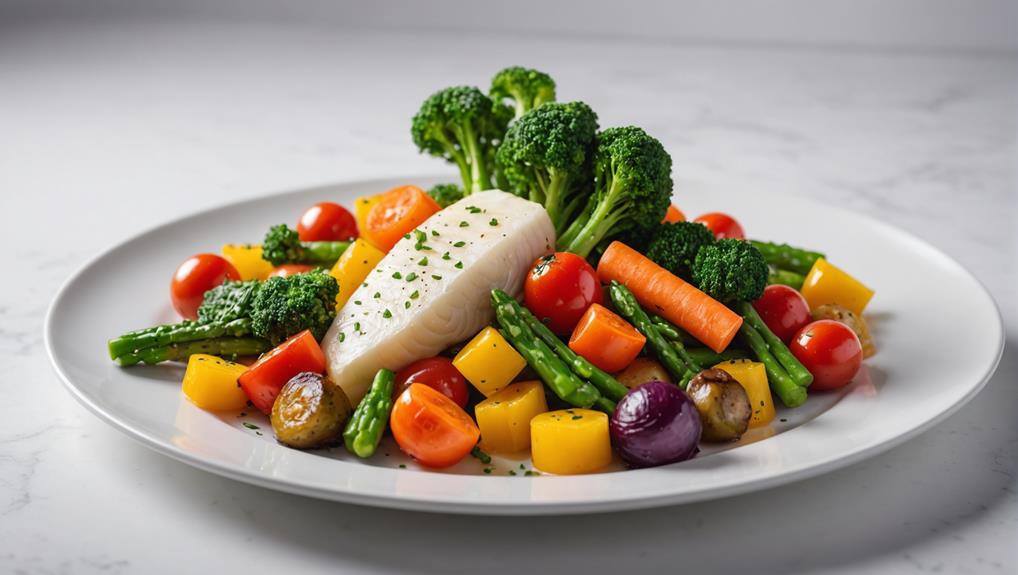
Bursting with vibrant colors and flavors, sous vide vegetable dishes offer more than just a feast for the eyes and taste buds. This innovative cooking method provides numerous health benefits that'll revolutionize your approach to plant-based cuisine.
By utilizing a vacuum sealer and precise temperature control, sous vide preserves more nutrients compared to traditional cooking methods.
Here's how sous vide elevates your vegetable dishes:
- Retains up to 50% more vitamins and minerals
- Enhances natural flavors without added fats or sodium
- Maintains optimal texture and color of vegetables
- Preserves antioxidants for improved overall health
The vacuum-sealed environment prevents nutrient loss by minimizing exposure to water that can leach vitamins during boiling.
This technique also reduces the risk of overcooking, ensuring your vegetables maintain their nutritional value and texture.
You'll experience enhanced natural flavors without the need for excessive seasoning, promoting healthier eating habits.
Frequently Asked Questions
What Is a Disadvantage of Sous Vide?
You'll find that sous vide's precise temperature control can be a double-edged sword. While it ensures consistent results, it also means longer cooking times. This can be impractical when you're looking for quick meal solutions in your innovative kitchen.
What Does Sous Vide Mean Literally?
You'll find that "sous vide" literally means "under vacuum" in French. This innovative cooking precision method seals food in a vacuum bag before immersing it in a temperature-controlled water bath. It's a game-changer for achieving perfect results.
Do Real Chefs Use Sous Vide?
Picture a bustling kitchen, where innovation sizzles: You'll find many top chefs embracing sous vide. Chef preferences vary, but this technique's precision and consistency have made it a staple in high-end restaurants, revolutionizing culinary artistry and streamlining service.
What Vegetables Can You Sous Vide?
You'll love the vegetable variety you can sous vide! Try asparagus, potatoes, carrots, and squash for starters. Each veggie brings unique flavors and textures to your plate. Experiment with different combinations to create innovative, nutrient-rich dishes.
Final Thoughts
You've now unlocked the secrets of sous vide vegetable mastery, a culinary technique that'll transform your dishes into works of art. Armed with precise temperature control and flavor-infusion methods, you're ready to elevate humble veggies to gourmet status. Remember, practice makes perfect, so don't be afraid to experiment. As you plate your creations, you'll see that sous vide isn't just cooking—it's a gateway to a world of textures and tastes that'll make your taste buds dance with joy.

